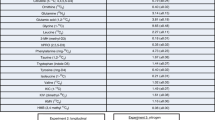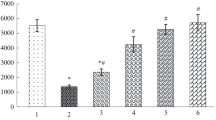Abstract
The maximal activities of 28 enzymes, representing multiple pathways of intermediary metabolism, were quantified in the brain, liver and skeletal muscle of spadefoot toads Scaphiopus couchii, comparing control toads with animals that had estivated for 2 months. Estivation-induced changes in brain enzyme activities were consistent with suppressed glycolysis and increased ketone body and amino acid catabolism. In liver, estivation resulted in reduced activities of eight enzymes representing carbohydrate, amino acid, ketone body and phosphagen metabolism, but the maximal activity of malic enzyme increased by 2.4-fold. Estivation led to a large-scale reorganization of skeletal muscle affecting most of the enzymes analyzed. Activities of enzymes of carbohydrate catabolism were generally elevated except for glycogen phosphorylase and hexokinase, whereas those of enzymes of fatty acid synthesis and ketone body metabolism were reduced. Increased glutamate dehydrogenase activities in both brain and muscle, as well as activities of other amino-acid-catabolizing enzymes in muscle, correlated with specific changes in the free amino acids pools in those tissues (reduced glutamine activity, increased glutamate, alanine and valine activities) that appear to be related to protein catabolism, for the purposes of elevating urea levels. The effects of estivation on signal transduction systems were also assessed. Total activities of protein kinases A and C (PKA and PKC) were largely unaltered in toad tissues during estivation (except for a 57% reduction in liver total PKC), but in seven organs there were strong reductions in the percentage of PKA present as the active catalytic subunit in estivating animals, and three contained a much lower percentage of membrane-bound active PKC during estivation. Activities of protein phosphatase types 1, 2A, 2B, and 2C were also frequently reduced during estivation. Overall, these results suggest that anuran estivation involves metabolic reorganization, including changing the maximal activities of key enzymes of intermediary metabolism as well as depressing the metabolic rate by suppressing signal transducing enzymes.
Similar content being viewed by others
Author information
Authors and Affiliations
Corresponding author
Rights and permissions
About this article
Cite this article
Cowan, K.J., MacDonald, J.A., Storey, J.M. et al. Metabolic reorganization and signal transduction during estivation in the spadefoot toad. EBO 5, 1–25 (2000). https://doi.org/10.1007/s00898-000-0001-8
Received:
Accepted:
Issue Date:
DOI: https://doi.org/10.1007/s00898-000-0001-8




